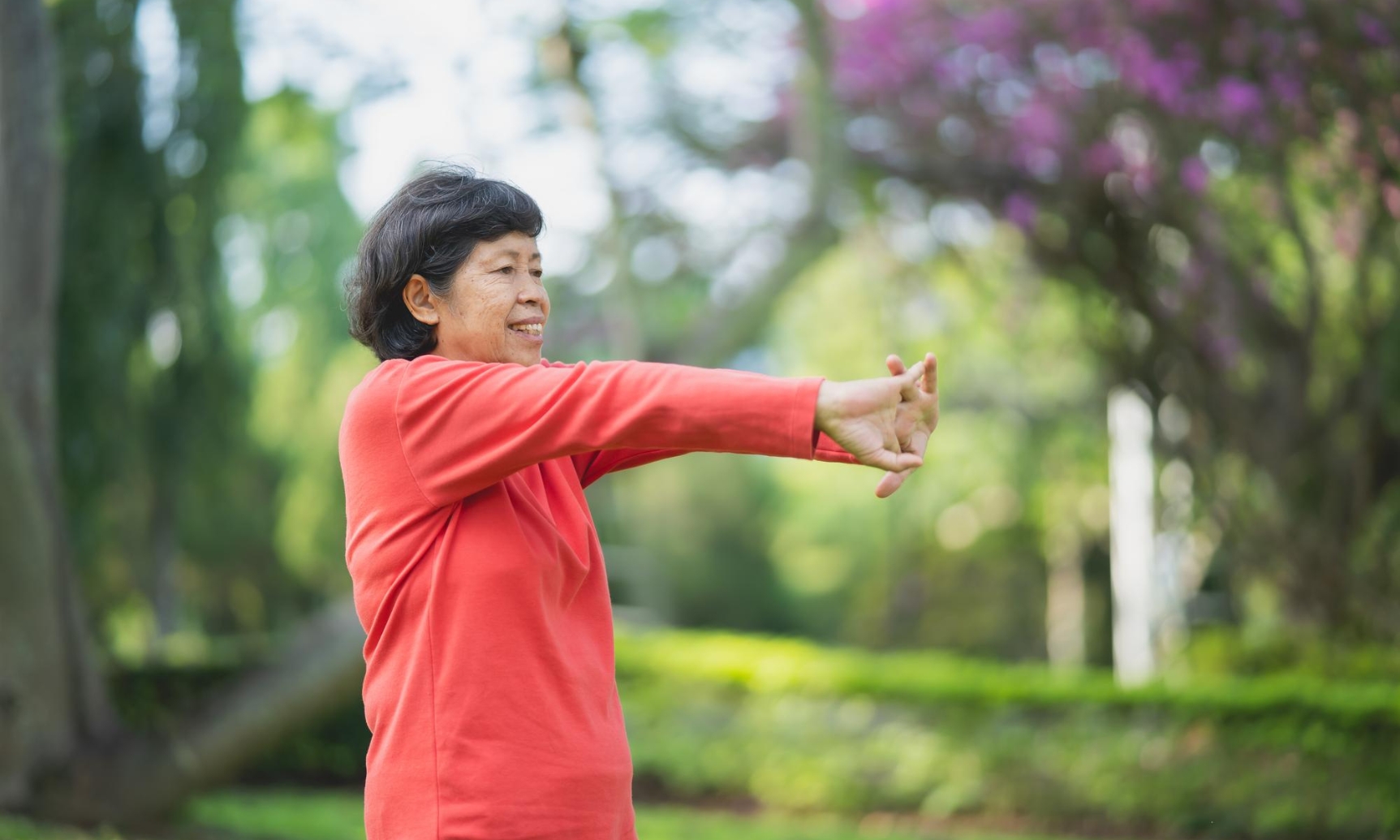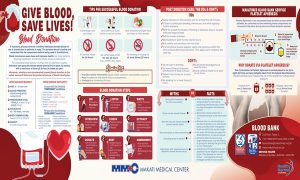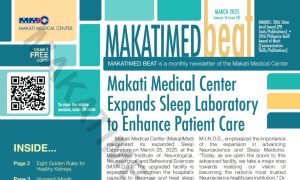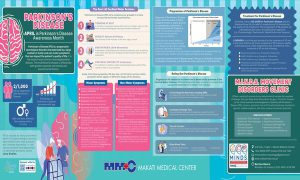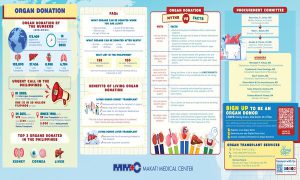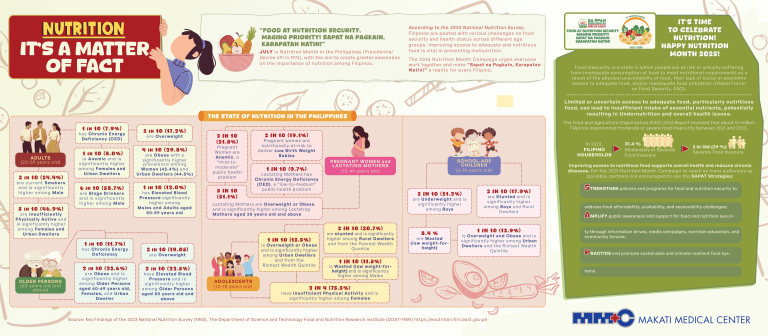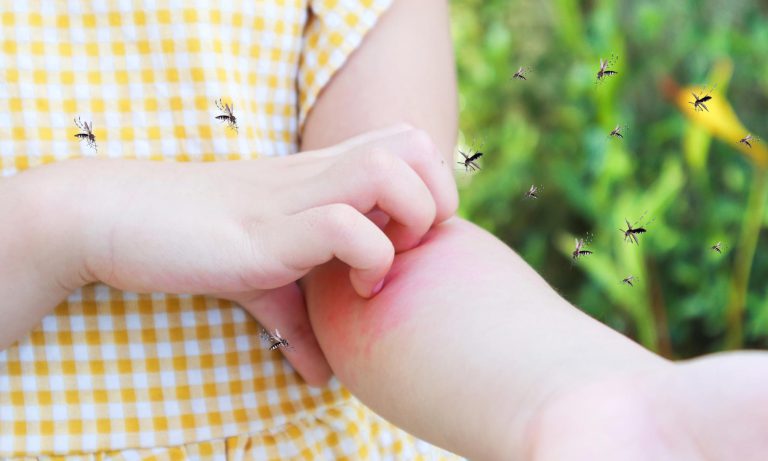Anyone who’s ever spent time with a senior citizen has heard all the complaints about creaking joints, brittle bones, or maybe even frequent fractures. For many, weak and brittle bones just seem to be an inevitable part of aging. But how much do people really know about bone health?
The truth is most people reach their peak bone mass at age 30. After age 30, we gradually begin to lose bone mass. As a result, David Cabatan Jr., MD, an Orthopedic Surgeon at Makati Medical Center (MakatiMed), points out it is a must for older adults to prioritize keeping an active lifestyle and a diet rich in nutrients like calcium and vitamin D to maintain their bone health.
“As we age our bone metabolism goes down, which means both the strength and thickness of our bones decreases. Thinner, weaker bones are more prone to fractures and take longer to heal,” explains Dr. Cabatan. “This naturally happens due to age, lifestyle, and even hormonal changes in women resulting from menopause. We also lose calcium as we age, at faster rates than we can deposit. This is called net calcium loss, and it can be related to the loss of estrogen during menopause.”
So, what are the conditions to watch out for? Loss of calcium is just one factor that can lead to conditions like osteoporosis, a bone disease characterized by decreased bone mineral density and mass, or changes in bone quality and structure. These changes lead to reduced bone strength and an increased risk of fractures.
“Osteoporosis has many forms. The most common is osteoporosis caused by aging but there’s also osteoporosis caused by hormonal changes or by kidney-related conditions,” says Dr. Cabatan. The expert further notes that most hip and knee injuries in seniors are actually hip fractures caused by osteoporosis. The brittleness of the bones makes fractures easy to suffer, even from minor falls.
The doctor also shares that osteoarthritis (also known as osteoarthrosis) is another common bone condition in seniors. While osteoporosis is the loss of bone mass, osteoarthritis is the degeneration of a joint. According to Dr. Cabatan, osteoarthritis happens when the cartilage inside your joints runs out and starts to thin out. It’s not caused by inflammation, which makes it different from rheumatoid arthritis.
“When it starts to thin out because of wear and tear and because of aging, your bones will rub against each other and swell up,” the doctor says.
To maintain strong bones Dr. Cabatan underscores the importance of a diet rich in calcium and vitamin D. Dairy products like milk, yogurt, and cheese are excellent sources of both nutrients. Leafy greens such as malunggay, kale, and spinach are also high in calcium. Fish like salmon, sardines, and mackerel not only provide calcium but also Vitamin D, which helps in calcium absorption. Shellfish like clams and oysters, for example, are also rich in calcium.
“Getting brittle bones is still a lifestyle disorder,” the doctor mentions. “Those who smoke and drink heavily have a higher chance of depleting their bone mass earlier.” Studies indicate that tobacco use is linked to weakened bones. Likewise, consuming more than one alcoholic drink per day for women or two drinks per day for men on a regular basis may elevate the risk of osteoporosis.
Beyond the food one consumes, it’s equally important to consider how you use your body. Exercise is crucial for keeping bones healthy, especially ones that keep you on your feet bearing your – weight. Think walking, jogging, and even Zumba. Aerobic and strength exercises are also recommended.
“Just keep moving and stay active. Learn how to improve your balance since seniors are more prone to fall injuries,” shares Dr. Cabatan, while warning senior citizens especially against exercising too intensely. “Match your exercise to your age. Don’t force something you know you can’t do.”
With movement so central to bone health, even the simplest of exercises go a long way in maintaining strength, flexibility, and overall mobility. For older adults concerned about their capacity to move, Siegfred Jude Pedrajas, PTRP of MakatiMed’s Physical Medicine and Rehabilitation Center shares low-impact exercises to help seniors get started.
- Neck Stretch: Sit or stand facing forward. Slowly turn your head to one side, hold for 10-15 seconds, then repeat on the other side.
- Neck Glide: Start with your neck in a neutral position. Gently move your chin forward, hold for 5 seconds, then return to the starting position. Repeat.
- Seated Jumping Jacks: Sit with arms at your sides. Raise your arms overhead until your thumbs touch, then lower them and repeat.
- Seated Marches: March in place while seated to engage hip flexors, quadriceps, hamstrings, glutes, and calves.
- Seated Hamstring Stretch: Sit on the edge of a chair with one leg extended and the heel on the floor. Sit upright and tilt your pelvis forward. Hold for 30 seconds, repeat three times for each leg.
Tired, weaker bones are a natural part of aging. It doesn’t mean you have to resign yourself to a sedentary lifestyle, constantly complaining about joint and muscle pain. A healthy lifestyle that underlines exercise and nutrient-rich foods can help even older adults maintain healthy bones for a long and happy life.
Article based on the MakatiMed Vodcast episode “Orthopedic Problems Among Senior Citizens” last October 13, 2021.
MakatiMed Center for Osteoporosis & Bone Health promotes early detection and preventive measures for bone health. It particularly offers Bone Mineral Densitometry (BMD) testing using Dual Energy X-Ray Absorptiometry, considered as the gold standard among equipment used for the detection of osteoporosis. Reach us via MakatiMed On-Call at (+632) 8888 8999 or at [email protected].
Follow our social media pages for more health-related content and for the latest updates: https://www.makatimed.net.ph/social-media-pages/

